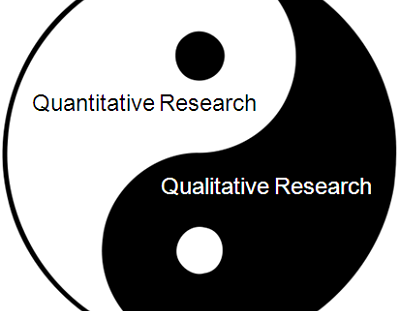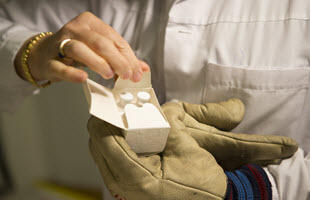Stories and Numbers Should Go Together: Alex Clark on Methods
Is ‘methods’ a process or a discipline, or something else entirely? Here, Alex Clark, editor-in-chief of the International Journal of Qualitative Methods addresses that question, the tensions between quantitative and qualitative approaches, and what does the future hold for methods in a conversation with Leah Fargotstein, social science journals editor at SAGE (the parent of Social Science Space). Clark is professor and associate dean of research nursing at the University of Alberta and advisory board chair of the International Institute for Qualitative Methodology. This post originally appeared at SAGE Connection as part of its Connecting with the Community series.
Looking both at its integration into academe and how often the methods are used, in your opinion, what’s the current state of qualitative methods?
Qualitative methods have never been richer or more diverse and I think that’s really exciting. I think it brings unique needs to the research community and I think that these are needs that this journal – working with SAGE – can meet.
Richer and more diverse – interesting! Can you expand on that?
The range of methods, the range of approaches to analyzing text and visual data, the question about what constitutes data… it’s never been richer and more different. This is creating new possibilities for knowledge, and in that way, new possibilities for changing the world. I think it’s part of the journal’s mission and mandate to try to meet the needs associated with those possibilities and help researchers fully realize the potential of their work.
In your opinion, are methods a discipline, a tool, a process, something else entirely, or a combination of all of these?
That’s a great question. I think methods can be all of those and how we use methods is really important as well – using methods to give voice, to make change, and to help make the world a better place. Methods have never been more pragmatic, more eclectic, and more dynamic than they are today. Again, it speaks to why researchers need the best journal they can have to help them develop skills, and to share insights and innovations of their work with the international, interdisciplinary research community.
How about the state of qualitative methods’ reputation, especially given the eternal quibbling between some partisans of qualitative and quantitative approaches?
I think the added value of qualitative methods is now recognized in the mainstream. If you were to look at mainstream journals and the questions of many researchers in health, social science, and psychology – all manner of different disciplines are asking questions that need solutions that aren’t just answered with quantitative research, but need the added value and added insights that qualitative research brings. Also, there are philosophical and theoretical approaches that allow us to bring qualitative and quantitative together in new, innovative, and cohesive ways that can help make our research better.
For example, as somebody who sits on funding committees in Canada, I see many research proposals each year using qualitative methods and mixed methods and it’s becoming almost lacking in credibility for researchers to take narrow approaches to their work – approaches that don’t look at different facets of complex social and health issues. And by using quantitative and qualitative together in new and different ways, we can help address these issues better. So I see it directly at the funding table, at the cutting edge of the research.
Sometimes there are issues of skills and training, and I think it behooves those of us in academic positions to help students meet this new and exciting challenge. And a good and supportive journal is part of that.
What are some of the trends in qualitative methods that really excite you?
I’ve seen lots of good trends. I think the embracing of qualitative methods by disciplines that traditionally haven’t involved themselves in qualitative research is a great trend. At the International Institute for Qualitative Methodology, we see a very wide range of disciplines coming to qualitative methods. We see shared, common problems and challenges across these disciplines with shared, common methodological solutions. It’s really exciting when you see different researchers from different disciplines come together to realize that they are not alone and that they share so much in terms of the challenges that they are facing. And then they can learn from each other as they address these challenges in their respective disciplines. So I think that both diversity and sharing are important. And the Institute and the journal can bring people together. We can learn a lot from each other!
On the flip side, are there any big disappointments or any trends that are troubling?
I think gaining and attaining respect for qualitative methods in the mainstream is important. We would hope that reviewers of qualitative manuscripts and journals, qualitative research proposals, and mixed methods research proposals have a good knowledge of qualitative research and assess those proposals fairly. I think the qualitative community has an important goal to try to be good role models for each other and for others and encourage those who don’t have as much awareness to become more aware and see how they can use qualitative methods to address questions that are important in their disciplines.
But I think there are also growing pains. For any emerging field, there is growing and developing that happens.
It’s also disappointing when you see that pitting of qualitative versus quantitative – that type of language being used. We need to move from conflict to reconciliation – to reconcile these different paradigms, which are actually entirely complementary. Stories and numbers can go together. Stories and numbers should go together – they need to.
The International Journal of Qualitative Methods is, well, international. How are qualitative methods approached differently in different locales? Are some specific methods favored – or eschewed – in some places to a greater or lesser degree than in others?
As with any research methodology, different countries and cultures take slightly different approaches to it. Some things are valued more highly than others in different locales, and I think it’s important for any international journal to be conscious of those differences, to be broad, diverse, and inclusive. By having an editorial board from different countries across the world and having an advisory board that is aware of those differences is important so that we reflect the different ways that researchers all over the world are understanding and approaching qualitative methods. Inclusivity is key.
I think in some areas, methods are still quite traditional – the semi-structured interview is king. Whereas in other areas in the world, more innovative approaches are used that sometimes challenge what data are, how we handle data, and how we analyze data and come to an agreement about what the data mean.
For example, in Australia, there are researchers doing cutting-edge work around indigenous health: identifying key populations that have very distinctive cultural perspectives and working collaboratively with them to foster better health using different qualitative and qualitative methods in different ways. With qualitative methods, researchers can preserve voice and respect culture. These researchers are a good example for all qualitative researchers working in different countries with vulnerable populations.
As I see it, there will always be debate, and there will always be discussion, but that’s where growth comes from. And there will always be difference, but difference isn’t a bad thing.
































































































